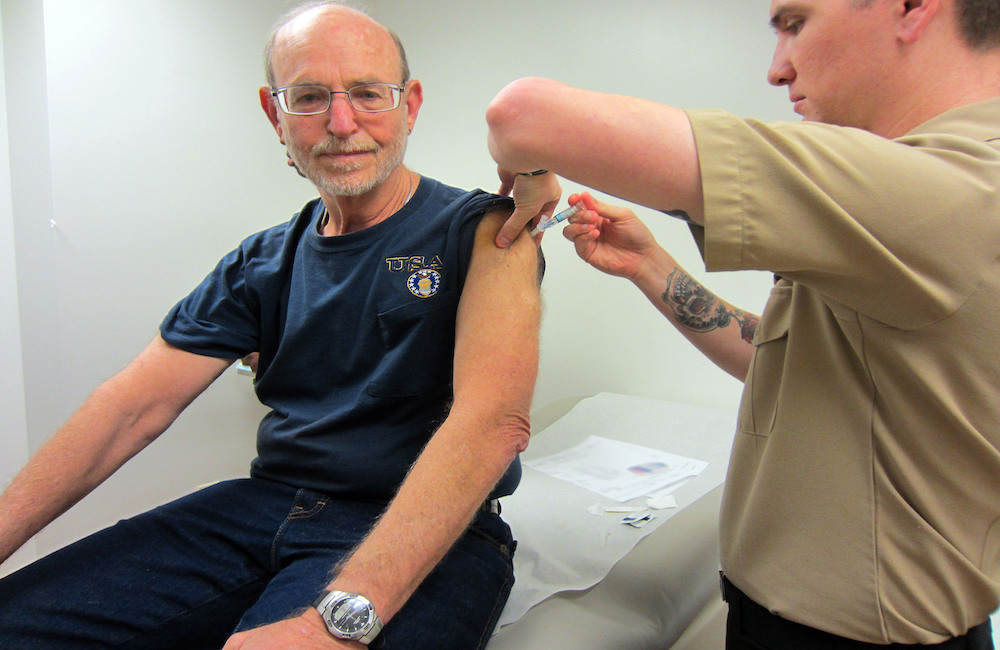DOD EHR Implementation Plan Eyes Sustained Interoperability
Federal officials modernizing the common health record are focusing on creating a joint environment for a coordinated care model.

As the departments of Veterans Affairs and Defense work toward creating a single, common federal electronic health record (EHR), leaders are focused on creating an environment that sets up the agencies for long-term interoperability.
“Don’t be fooled by the success of the joint Health Information Exchange (HIE) or Joint Longitudinal Viewer (JLV). They’re doing great work, but we still are in aggressive pursuit of interoperability,” said John Windom, deputy director at FEHRM, during a June 7 roundtable discussion. “With interoperability comes aggressive and important configuration management, interface management requirements, data management requirements. … We believe that not only the achievement of interoperability, but the sustainment of interoperability, is part of our end state objectives.”
The single, common federal EHR includes DOD, VA, the Coast Guard and, most recently, the National Oceanic and Atmospheric Administration (NOAA). Coast Guard has achieved 100% shoreside implementation of its EHR solution, and DOD is approaching 90% of all continental U.S. (CONUS) activities.
Holly Joers, program executive director for the Defense Healthcare Management Systems (DHMS) Program Executive Office, said within the past week, her team went live with its last CONUS full wave at Wright-Patterson Air Force Base.
“We just went live this weekend with Wave Wright-Patterson, and Sheppard Air Force Base was part of that, which was really part of Wave [Brooke Army Medical Center], and also live with NOAA. So, when we talk about our federal partnerships expanding, this the first time we’ve simultaneously gone live with another federal agency while we’re doing our command center,” Joers said.
DHMS will begin OCONUS operations in fall 2023, with Europe targeted in September and the Pacific Rim shortly thereafter at the start of the fiscal year. Even with the notable progress, Joers said EHR implementation is “far from done.” Looking ahead, Joers said her focus will be on optimizing the workflow to improve user experience, taking a targeted adoption and training approach.
“We’ve worked about 4,000 or so configuration changes since we first went live with Wave Travis in 2019. And we continue to add projects. We have, at any given time 50 to 80 project enhancements for continuous improvement to include where we’re going with digital health. We have video connect, but we’re looking to continually evolve that and look at the patient-facing aspect of platform,” Joers said.
Additionally, Joers’ team recently completed one of the largest data migrations in the history of the Military Health System, with MHS Data Repository, which housed approximately 60 billion transactions annually, moving into the MHS Information Portal.
“Longitudinal record is really a misnomer. It’s a coordinated care model. It’s about team care, and it’s about getting the right information, in the right hands, at the right time to make decisions,” Joers said. “Our MIP combined 130 different secondary sources into one data platform. That coupled with the real-time information from the EHR really started to unlock a lot of potential.”
FEHRM Director Bill Tinston said interoperability is not only about the ability to share data, but also it’s about how these agencies work together to bring community health care data and information into the health care ecosystem to provide the best care, opportunities and benefits to patients.
Tinston said the FEHRM is advocating for a single baseline and integrated set of workflows that drive health care decisions, not the IT.
“We share data. We share patients. We share facilities. We do that together. We share integrated operations. We share an integrated health care delivery operation,” Tinston said. “When we talk about interoperability, think bigger. … The key to that is making the tools that we provide simple and making the tools that we provide responsive to the needs of the health care system and the larger federal health care enterprise so that the right decisions can be made, irrespective the IT.”
In April, VA reset its electronic health record modernization program to focus efforts on the five sites currently using the new Oracle-Cerner system. During the roundtable, Dr. Neil Evans, program executive officer of the agency’s Electronic Health Record Modernization Integration Office, said VA will focus on optimization during this period.
“We are taking a deep dive to address some of the issues that are currently impacting the clinician experience, productivity, performance of the system, and really concentrating on those improvements at our five sites, while also making the investments in what do we need to do within VA to really do what we’ve seen our colleagues at DOD do, and that is really accelerate deployment and build the enterprise structures to succeed at scale,” Evans added.
In terms of next steps, EHR leaders emphasized an increased focus on joint sites. This includes launching a modern EHR solution at James A. Lovell Federal Health Care Center in North Chicago — where 70% of the users carry a VA badge and 30% carry a DOD badge. The facility also processes over 40,000 Naval recruits every year as they come for the basic training.
“How do we take the model in North Chicago, improve it and give the opportunity to the people that we all work for — in Congress, in the administration, in the secretaries, in the cabinet — to provide the opportunities and see the opportunities for where we can do joint facilities?” Tinston said. “My personal assessment is that our likelihood of success in creating the right outcomes in North Chicago are higher now than they’ve ever been before.”
Deployment at the North Chicago facility is targeted for March 2024.
This is a carousel with manually rotating slides. Use Next and Previous buttons to navigate or jump to a slide with the slide dots
-

CDC Updates Public Health Data Strategy
Accelerating data sharing through capabilities like electronic case reporting make up a large portion of the new two-year plan.
3m read -

How VA is Using Digital Services to Expand Care to Veterans
CIO Kurt DelBene says the the agency’s 2024 priorities included AI adoption, hiring and a better user experience for veterans.
30m listen -

VA Kicks Off EHR Program at Joint Facility with DOD
The agency's Dr. Neil Evans briefed how the Oracle-Cerner program rollout in North Chicago is informing next steps in EHR modernization.
4m read -

How AI, Digital Transformation in Health Care Compare Around the World
HHS and EU officials contrasted the different frameworks for emerging technology and the challenges that remain.
4m read




